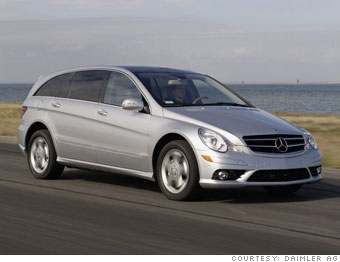
Let it never be said that Americans aren't a generous or charitable people. In fact, the most comprehensive research on U.S. volunteering ever assembled has just been released, and the numbers are encouraging -- particularly given the soft economy and an uncertain global future.
Today the results of the Volunteering in America report were unveiled, based on six years of data, by the Corporation for National and Community Service and the USA Freedom Corps. The data show that nearly 61 million Americans volunteered in their communities in 2007, giving 8.1 billion hours of service worth more than $158 billion. As the report authors point out, many factors have made it easier for ordinary folk to give of themselves, from broad adoption by companies of social and environmental responsibility initiatives to support from local governments, faith-based and community service groups and much more.
Nationally, 60.8 million or 26.2 percent of Americans age 16 and older volunteered through organizations in 2007. After a 6% dip in volunteers between 2005 and 2006, volunteering levels stabilized in 2007. Notably, the study reported that today's young people are volunteering at higher rates than the last generation (perhaps those Gen Xers really were too jaded), while Baby Boomers are expected to move into their Golden Years with a strong commitment to community service.
Volunteer time spent was pretty evenly distributed among fundraising, collecting and distributing food, general labor and tutoring/teaching. The religious, educational and social services sectors saw the biggest contributions. It is currently unclear if data has been specifically tabulated on volunteering on behalf of the environment, though such efforts are clearly covered in the overall numbers.
In addition to analyzing data across the country, the report looked at how volunteers and non-volunteers spend time. The largest difference was, perhaps not surprisingly, in how much time people spend watching TV. In a typical week, volunteers spend 15 hours with the boob tube, compared to 23 hours for non-volunteers. That difference adds up to more than 400 hours in a year. Volunteers were also more likely to spend more of their day interacting with others.
Women were more likely to volunteer than men (30.6% versus 23.6%). College towns had a particularly high rate of service, and the region with the highest percentage was the Midwest.
Most Generous States, By Volunteer Hours
1. Utah, 43.9%
2. Nebraska, 39.8%
3. Minnesota, 39.7%
4. Alaska 38.6%
5. Montana 38.0%
Most Generous Mid-Size Cities, By Volunteer Hours
1. Provo, Utah 63.8%
2. Iowa City, Iowa 45.1%
3. Madison, Wis., 42.3%
4. Greenville, S.C. 41.0%
5. Ogden, Utah 41.0%
Most Generous Large Cities, By Volunteer Hours
1. Minneapolis-St. Paul, 39.3%
2.Salt Lake City, 37.2%
3. Portland, Oregon 35.6%
4. Seattle, 35.5%
5. Austin, 35.3%
(National average: 27.2%)




















![[Bennigan's]](http://s.wsj.net/public/resources/images/MK-AQ929_BENNIG_20080729193108.jpg)
![[John Kluge]](http://s.wsj.net/public/resources/images/HC-GM139_Kluge_20080603191413.gif)
![[Photo]](http://s.wsj.net/public/resources/images/OB-BY064_bennig_20080729122458.jpg)








